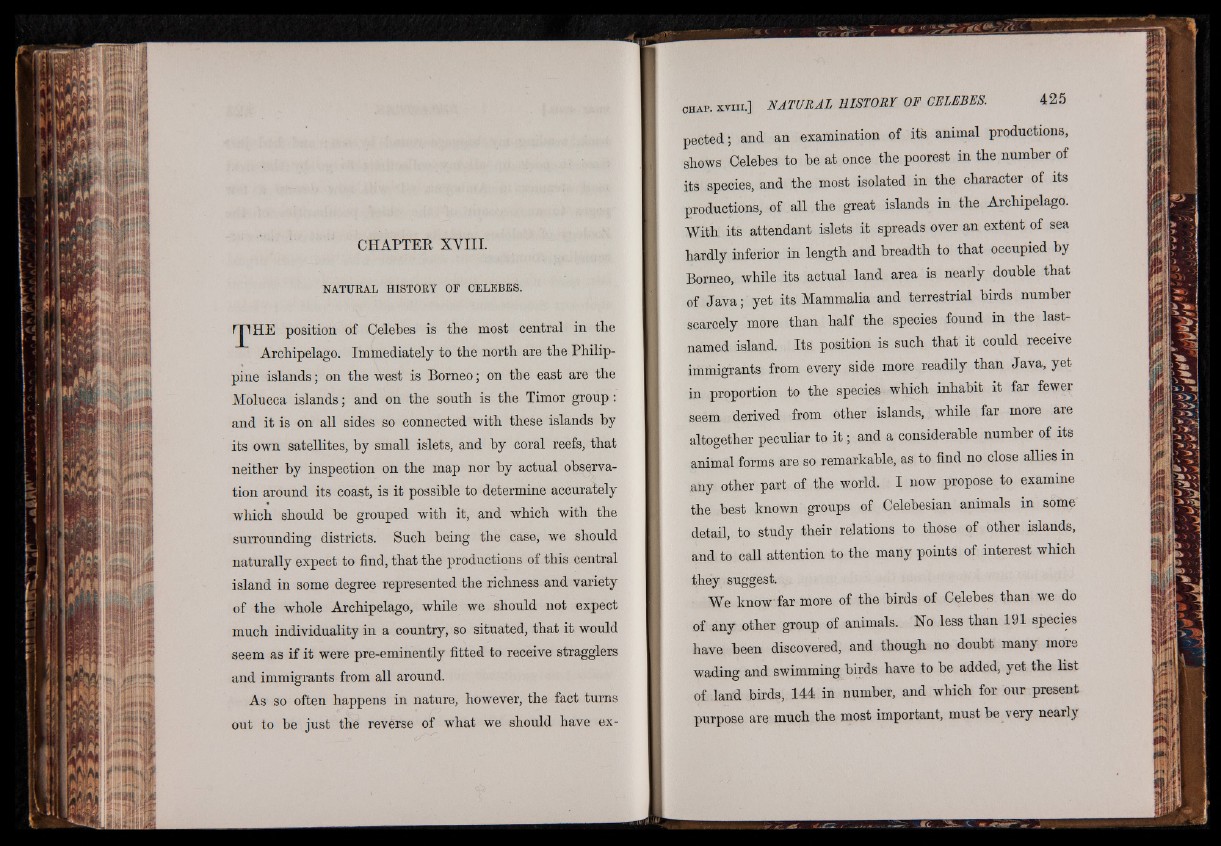
CHAPTER XVIII.
NATURAL HISTORY OF CELEBES.
HE position of Celebes is the most central in the
Archipelago. Immediately to the north are the Philippine
islands; on the west is Borneo; on the east are the
Molucca islands ; and on the south is the Timor group :
and it is on all sides so connected with these islands by
its own satellites, by small islets, and by coral reefs, that
neither by inspection on the map nor by actual observation
around its coast, is it possible to determine accurately
which should be grouped with it, and which with the
surrounding districts. Such being the case, we should
naturally expect to find, that the productions of this central
island in some degree represented the richness and variety
of the whole Archipelago, while we should not expect
much individuality in a country, so situated, that it would
seem as if it were pre-eminently fitted to receive stragglers
and immigrants from all around.
As so often happens in nature, however, the fact turns
out to be just the reverse of what we should have expected;
and an examination of it's animal productions,
shows Celebes to be at once the poorest in the number of
its species, and the most isolated in the character of its
productions, of all the great islands in the Archipelago.
With its attendant islets it spreads over an extent of sea
hardly inferior in length and breadth to that occupied by
Borneo, while its actual land area is nearly double that
of Jav a ; yet its Mammalia and terrestrial birds number
scarcely more than half the species found in the last-
named island. Its position is such that it could receive
immigrants from every side more readily than Java, yet
in proportion to the species which inhabit it far fewer
seem derived from other islands, while far more are
altogether peculiar to i t ; and a considerable number of its
animal forms are so remarkable, as to find no close allies in
any other part of the world. I now propose to examine
the best known groups of Celebesian annuals in some
detail, to study their relations to those of other islands,
and to call attention to the many points of interest which
they suggest.
We know far more of the birds of Celebes than we do
of any other group of animals. Ho less than 191 species
have been discovered, and though no doubt many more
wading and swimming birds have to be added, yet the list
of land birds, 144 in number, and which for our present
purpose are much the most important, must be very nearly